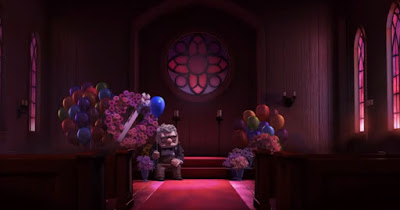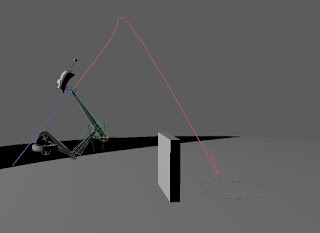For this task I was asked to create a parody of the Pixar intro animation but with my own name.
The animation demonstrates Squash and Stretch in the movement of the body of the squirrel and the letters, which squash and stretch when the character is jumping from one to another. The teeth of the animation character boost its appeal and make it comic. I have demonstrated what I have learned about the Secondary Action, Follow Through and Overlapping Action principles with the animation of the big tail of the squirrel. The tail follows the movement of the body and overlaps with every following jump the squirrel does. The movement of the tail is very important for the whole animation, as it makes it more realistic and believable. I have used it to also express the feelings of the squirrel, for instance, when the squirrel sees the `playground` (my name), its tail stretches up to show the amazement of the character.
I have applied Exaggeration to the movement of the letter `I` when it stretches up really quickly. This contributes to the comedic look of the animation. The big jump that the squirrel does just before it starts playing on the playground proves my skills in the Arcs principle. The character does a really nice and smooth jump and the trajectory demonstrates Arcs perfectly.
The Slow in and Slow out principle is shown in the final fall in the animation. The character falls from the sky very quickly and when it hits the little platform, it slides down to the ground. I have also demonstrated Anticipation in my animation - before two of the jumps, the squirrel anticipates by trembling its tail. This also reveals a lot about the personality of the character and it shows what the character is thinking at the moment.
I have applied the Straight Ahead and Pose To Pose principles for all of the jumps of the character by changing the timing in the graph editor. The movements start slowly, build up and end slowly which helps the final look of the animation, as it prevents it from looking mechanical. Solid Drawing is applied in the animation when the squirrel is bouncing on the letter `A`. The movement gives the character weight, balance and volume. The lighting in my scene also helped for the three-dimensional finish.
Timing is one of the most important principles of the animation as it affects the personality and nature of the animation. I think I have applied the right timing, especially in the last few frames of the animation. The time before the appearance of the squirrel feels just right and again - it contributes to the success of the final product.
I have applied Staging to the movement of the camera which presents the idea of the animation clearly. For instance, when the squirrel is shot up in the sky, the camera goes up and then it turns left and right. This shows that the camera is searching for the object and presents that idea unmistakably.
References:
The model is downloaded from AnimationMentor: http://www.animationmentor.com/free-maya-rig/













